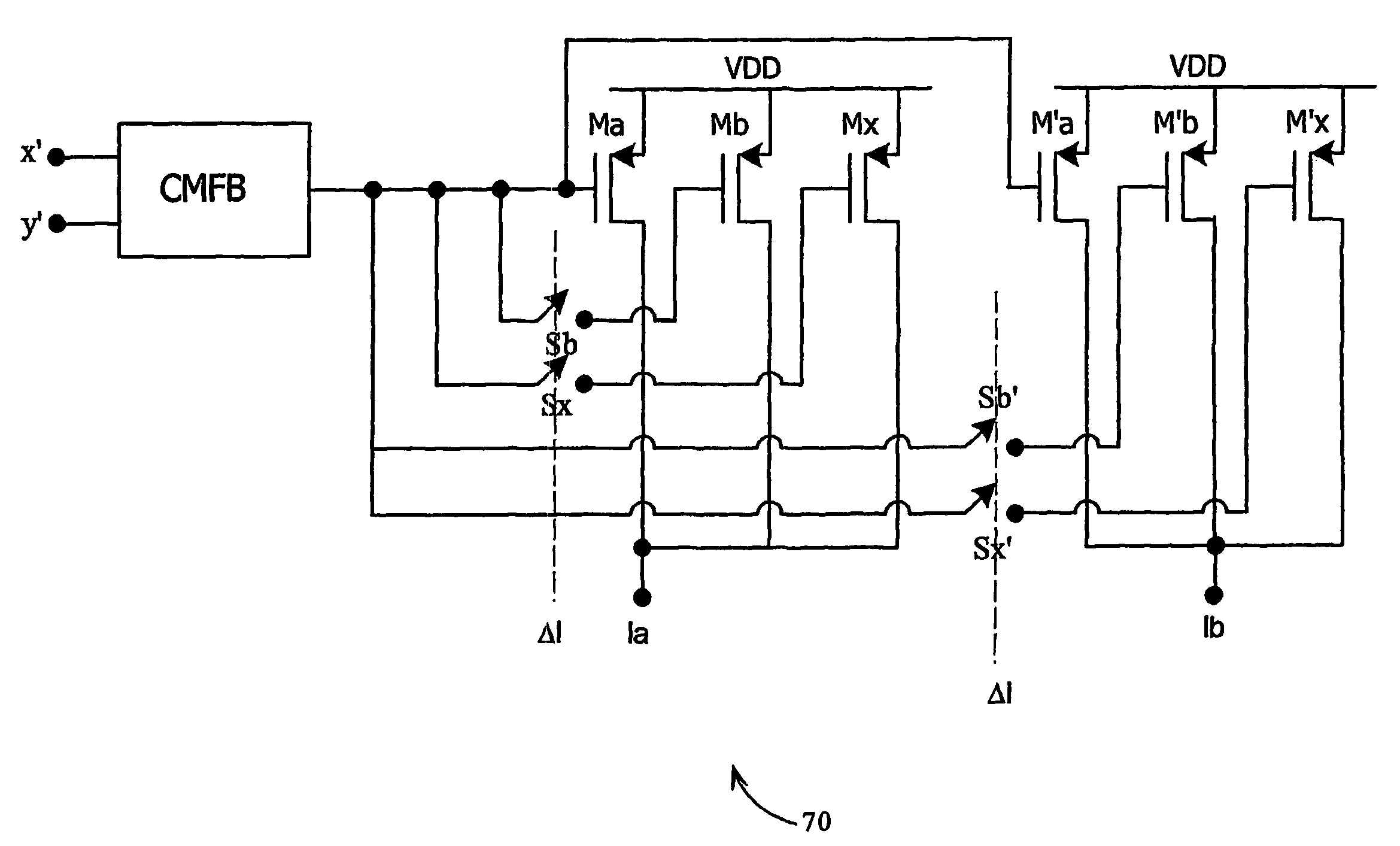Method for reducing IM2 noise in a down conversion circuit
a conversion circuit and im2 noise technology, applied in the direction of dc level restoring means or bias distort correction, line-faulst/interference reduction, baseband system details, etc., to achieve the effect of reducing current, reducing im2 and dc offset, and relaxing the matching parameters of the mixer
- Summary
- Abstract
- Description
- Claims
- Application Information
AI Technical Summary
Benefits of technology
Problems solved by technology
Method used
Image
Examples
Embodiment Construction
[0060]A circuit which addresses a number of the objects outlined above is presented as a block diagram in FIG. 2. This figure presents a demodulator or down-conversion topology 50 in which a differential input signal x(t) is down-converted by mixing it with two mixing signals φ1 and φ2. A “differential” signal is simply a signal which is available in the form of positive and negative potentials with respect to ground. Thus, this circuit handles an input signal in the form of a differential voltage, x(t)+, x(t)− as the radio frequency (RF) input signal.
[0061]The use of a differential architecture results in a stronger output signal that is more immune to common mode noise than a single ended architecture such as that of FIG. 1. If, for example, environmental noise imposes a noise signal onto the input of FIG. 1, then this noise signal will propagate through the circuit. If the same environment noise is imposed equally on the x(t)+ and x(t)− inputs of the differential circuit of FIG. ...
PUM
 Login to View More
Login to View More Abstract
Description
Claims
Application Information
 Login to View More
Login to View More - R&D
- Intellectual Property
- Life Sciences
- Materials
- Tech Scout
- Unparalleled Data Quality
- Higher Quality Content
- 60% Fewer Hallucinations
Browse by: Latest US Patents, China's latest patents, Technical Efficacy Thesaurus, Application Domain, Technology Topic, Popular Technical Reports.
© 2025 PatSnap. All rights reserved.Legal|Privacy policy|Modern Slavery Act Transparency Statement|Sitemap|About US| Contact US: help@patsnap.com



